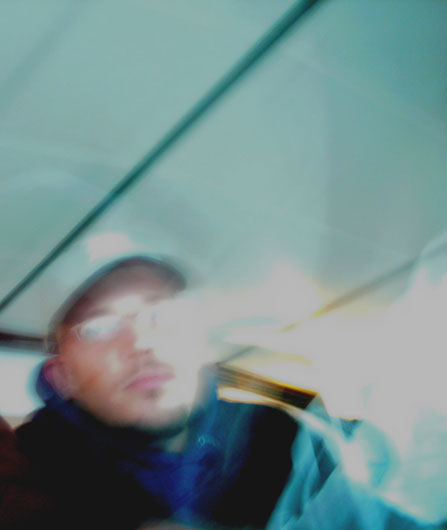Artist Tips: Intrusion Talks About the Five Parameters Most Central to His Sound
Chicago-area producer Stephen Hitchell (a.k.a. Intrusion) crafts dub-techno that sounds like it’s underwater, or floating […]

Chicago-area producer Stephen Hitchell (a.k.a. Intrusion) crafts dub-techno that sounds like it’s underwater, or floating through the air from a basement club 10 blocks away. Under his many monikers, including the collaborative Echospace project with Rod Modell, Hitchell has helped bring about a renaissance of the genre, which many had assumed would falter after the dissolution of Basic Channel. But with a studio full of analog gear and a penchant for warm, crackling tones, Hitchell has brought an airiness to a sound that originated in hard, deeply contrasting sonic textures, particularly on this year’s Seduction of Silence (Echospace).
Sound Design
Sound design is by far one of the most personal aspects of my music and what I generally spend the most time doing. Get involved with your synths—every aspect of their functions and unique personalities. Like a person, each one has its own unique sonic signature, its own “sound”—one which could be built upon by learning the instrument inside and out. If you get a new synth (hardware or VST), delete the factory presets and start from ground zero (most synths have a factory restore!). Build a library of sounds that are your own, as it will help to build a unique sonic signature for yourself.
Sampling
Sampling is an art in itself and an integral part of how this music came to be. Many samplers out there can help add warmth, and give a flat and dull digital sound a new lease on life. I’ve found with samplers, the older the better. Some of my favorites are the Emulator 1 and SCI Prophet 2002, both of which use 8- and 12-bit sampling at lower frequencies. The unique tonal character they give to whatever you’re sampling is out of this world. Sometimes in moving forward it’s best to go in reverse.
Signal Paths
It’s best to research how a sound should be processed rather than playing the guessing game, which helps to highlight and emphasize the best acoustic and tonal characteristics. It’s like running an EQ into a compressor—when you change the EQ settings, your compression rate also changes, and usually turns into a muddy mess. Learn about your processors (whether hardware or VST), how they can be best applied, and how to highlight their own unique features. I’ve had numerous clients run their entire mixes through compression and hard limiting to the point of hammering the mix into a square box, and this is not a good thing!
Recording to Tape
Everything I record I bounce down to tape. Granted, 1/4″ and 1/2″ tape is getting harder and harder to come by (at least stuff that isn’t shedding), but if you can find a good machine and tape, it will warm your mixes in indescribable ways. Part of its magic is in the machine itself: old tape machines, if calibrated correctly, can push the compression scheme three-fold without distorting the source signal, which adds to the saturation and yields a much higher quality master than in a DAW. Tape compression and true tape saturation make for some of the best masters you’ll ever hear.
Mastering
Some of the best mastering engineers I know were not musicians. It’s very important to separate yourself from the music you make when mastering it. I try to explain to my clients that I don’t listen to their music. Rather, I pay attention to the technical data and what the equipment is telling me. You can make a good song sound bad if you’re not paying attention, so it’s important to go over every small detail in the finalization process. I don’t ever try to get material to its “peak” level but to its most “natural” level. And always check your master in different environments: your car, headphones, home stereo, crappy boom box, studio, and club, if that is your target audience.

